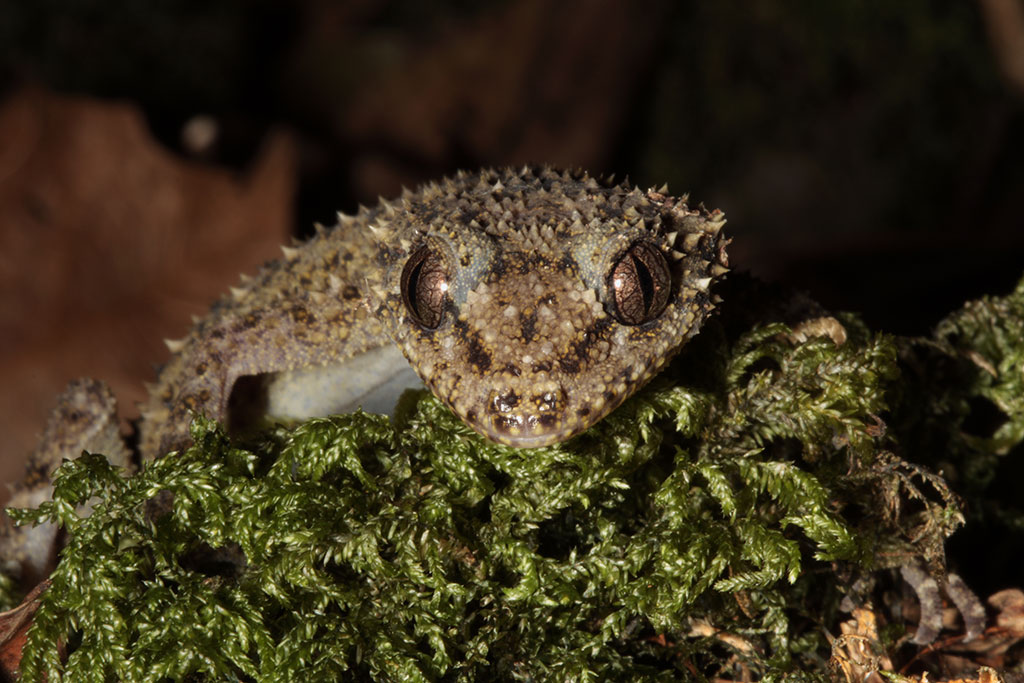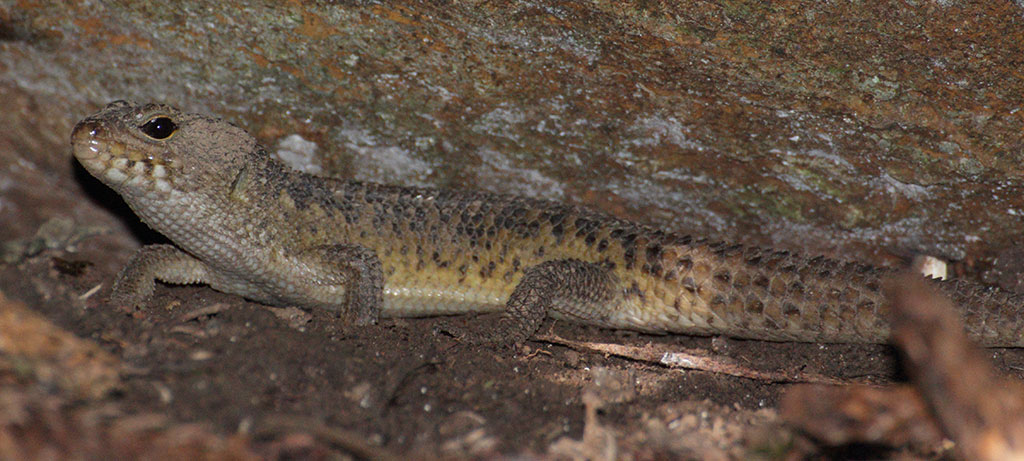Oakview National Park—Species assessment
Species surveys were conducted to detect priority threatened species in burnt habitats. Unburnt habitats were also surveyed as a comparison, to see if they were acting a refuge for recovery. Surveys were also used to establish broader spatial distributions, relative population size and breeding status where possible.
The priority species surveyed were the Oakview leaf-tailed gecko Phyllurus kabikabi and Nangur spiny skink Nangura spinosa.


Oakview leaf-tailed gecko (Phyllurus kabikabi)
The Oakview leaf-tailed gecko is listed as Critically Endangered under the Nature Conservation Act 1992. It is restricted to two types of vine forest ecosystems and occurs only in patches with a deep layer of igneous rocks. This species is very cryptic, sheltering by day among boulders and in hollows and actively foraging at night for small invertebrates.
A total of 1,252 hectares of the modelled potential habitat for the Oakview leaf-tailed gecko occurs in Oakview National Park with 8% impacted by the 2019 fire. Ground surveys were undertaken to assess the likely impact on the gecko population after the fires, and the local threats to their recovery.
Burnt and adjacent unburnt areas of suitable rocky habitat were surveyed using camera trapping and passive nocturnal searches. Direct fire impacts on the gecko were difficult to quantify due to the lack of baseline information. The most significant areas of core habitat with the largest known population of Oakview leaf-tailed gecko were successfully defended during the 2019 bushfire, although the creation of a fireline impacted some suitable habitat. Surveys in habitat adjacent to this fireline found a decline in gecko detection rates compared to surveys from previous years.
Recommendations for ongoing support for the recovery of the Oakview leaf-tailed gecko includes excluding fire from optimal habitat, preventing incursion of weeds such as cat’s claw creeper and controlling feral cats, foxes, deer and pigs. Public access will continue to be restricted to protect gecko populations from illegal collection and the potential introduction of disease.


Nangur spiny skink (Nangura spinosa)
The Nangur spiny skink is listed as Critically Endangered under both the Queensland Nature Conservation Act 1992 and the Commonwealth Environment Protection and Biodiversity Conservation Act 1999. It is only known from Oakview and Nangur National Parks with the remnant populations being small and of significant conservation concern. Nangur spiny skinks inhabit vine thicket or forest living and live in short burrows from which they forage at dusk and dawn for insects and other invertebrates.
A total of 1,469 hectares of modelled potential habitat for the Nangur spiny skink occurs in Oakview National Park, with 2% of habitat impacted by the 2019 bushfire. Ground surveys were undertaken to evaluate the likely impact on the Nangur spiny skink populations after the 2019 fire and to assess the threats in their core habitat.
Surveys involved direct searching for Nangur spiny skinks across suitable burnt and unburnt habitat in Oakview National Park. Previously established monitoring transects were surveyed and gridded area searches undertaken in other areas. Direct fire impacts to the Nangur spiny skink population were limited, given the successful defence of core habitat from the 2019 bushfire by emergency crews. Survey results indicated that this core Nangur spiny skink population is stable but declining at the margins of their extent.
Whilst Nangur National Park was not impacted by the 2019 bushfire, the resident Nangur spiny skink population is very small and genetically distinct, with their ongoing viability critical to the conservation of the species. At Nangur National Park, surveys confirmed an ongoing slow decline in the number of mature Nangur spiny skinks, as well as an increase in the number of juveniles, which is encouraging.
Recommendations for continued efforts to support Nangur spiny skink populations includes excluding fire from suitable habitat, preventing invasion of aggressive weeds and targeting pest animals such as cats, foxes, deer and pigs. Maintaining restrictions to public access reduces the risk of illegal take and interference with Nangur spiny skinks. An ongoing captive breeding program will also serve to augment wild populations and support persistence of the species.


